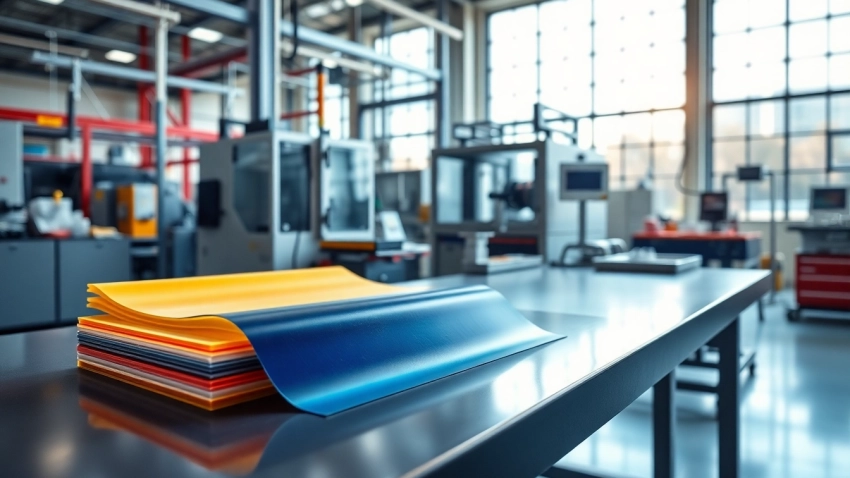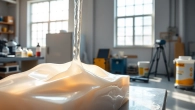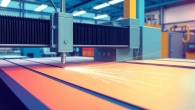
Understanding Epoxy Prepregs: Applications and Advantages in Manufacturing
Introduction to Epoxy Prepregs
Epoxy prepregs represent a significant advancement in the field of composite materials, comprising layers of reinforcing fibers pre-impregnated with a thermosetting resin. Their unique properties and versatility make them a preferred choice in various industrial applications such as aerospace, automotive, and sports equipment. Understanding what makes epoxy prepregs distinct and valuable is essential for manufacturers aiming to leverage advanced materials in modern production processes. This article delves deep into the functionalities, benefits, applications, and future trends of epoxy prepregs, providing a comprehensive guide for engineers and manufacturers alike. For more insights, check out epoxy prepregs.
What Are Epoxy Prepregs?
Epoxy prepregs, or pre-impregnated composite materials, consist of a fiber reinforcement—typically carbon, glass, or aramid—that has been pre-impregnated with a resin matrix. This resin, typically an epoxy, is partially cured, ensuring that the fibers are bonded with the resin before they are laid up into the final structure. This pre-impregnation process enhances the consistency and quality of the composite material, minimizes excess resin, and supports procedural efficiency in manufacturing.
Benefits of Using Epoxy Prepregs
Utilizing epoxy prepregs comes with numerous benefits:
- Superior Strength-to-Weight Ratio: Epoxy prepregs achieve a high strength relative to their weight, making them ideal for applications where performance is critical and weight savings are paramount.
- Enhanced Durability: The chemical resistance and toughness of epoxy resin contribute to the longevity and reliability of prepreg components in harsh environments.
- Reduced Processing Time: The ease of handling prepregs allows for streamlined manufacturing processes, reducing overall production times and costs.
- Uniformity and Precision: Pre-impregnation ensures a consistent resin distribution, resulting in even properties throughout the composite material.
Common Applications of Epoxy Prepregs
Epoxy prepregs are prominently used in several industries due to their unique properties:
- Aerospace: In aircraft manufacturing, lightness and strength are critical. Epoxy prepregs are used in structural components like wings and fuselages.
- Automotive: The automotive sector utilizes epoxy prepregs for parts requiring high-performance composites, such as body panels and interior elements.
- Sports Equipment: High-performance sporting goods, including bicycles, surfboards, and golf clubs, often incorporate epoxy prepreg technology.
Properties of Epoxy Prepregs
Mechanical Properties of Epoxy Prepregs
The mechanical characteristics of epoxy prepregs place them at the forefront of composite materials. Key attributes include:
- Tensile Strength: Epoxy prepregs generally display high tensile strength, making them suitable for load-bearing applications.
- Flexural Modulus: The stiffness of the prepreg can be adjusted based on the fiber and resin selection, providing customization for specific applications.
- Impact Resistance: The tough epoxy matrix enhances the ability of prepregs to resist damage from impacts, a crucial factor in durability.
Curing Processes for Epoxy Prepregs
The curing process for epoxy prepregs typically involves heating to initiate the chemical reaction which solidifies the epoxy resin. Understanding the curing stages is vital for optimizing performance:
- Initial Cure: Heating the prepreg to a specific temperature activates the hardener, allowing it to achieve a semi-cured state.
- Full Cure: After initial curing, the composite is often subjected to higher temperatures to achieve full polymerization, maximizing its mechanical properties.
Comparative Analysis with Other Prepreg Types
When compared to other types of prepregs, such as phenolic or polyurethane, epoxy prepregs offer unique advantages. For instance, epoxy typically provides superior adhesion, better mechanical performance, and excellent thermal stability, making them more suited for demanding applications. However, they may have a narrower operational temperature range, which should be considered during design.
Manufacturing with Epoxy Prepregs
Best Practices for Handling Epoxy Prepregs
Proper handling of epoxy prepregs is essential for ensuring quality and performance. Key practices include:
- Temperature Control: Maintain prepregs at low temperatures to prolong shelf life and prevent premature curing.
- Clean Workspace: A clean environment minimizes contamination, which can impact adhesion properties and final product integrity.
Production Techniques for Epoxy Prepregs
The production of epoxy prepregs involves several techniques tailored to specific applications:
- Layup Process: In this method, prepregs are layered onto molds in specific orientations to optimize strength in the desired direction.
- Autoclave Curing: Many manufacturers use autoclaves to cure epoxy prepregs under controlled temperature and pressure settings. This process enhances the structural integrity and surface finish of the final products.
Quality Control Measures in Epoxy Prepreg Manufacturing
Implementing robust quality control is crucial when working with epoxy prepregs. Important measures include:
- Material Inspection: Consistently check incoming materials for conformity to specifications before use.
- Performance Testing: Conduct mechanical and thermal tests on produced components to ensure compliance with design standards.
Challenges in Using Epoxy Prepregs
Common Issues and Solutions
While epoxy prepregs offer excellent benefits, several challenges may arise, such as:
- Curing Issues: Inadequate curing can lead to weak products. Ensuring precise temperature control during the curing process can mitigate this risk.
- Storage Limitations: Due to their sensitivity, improper storage can degrade prepreg quality. Using vacuum sealing and temperature-stable environments can alleviate this issue.
Storage and Shelf Life of Epoxy Prepregs
Understanding the shelf life of epoxy prepregs is vital for manufacturers. Most prepregs have a specific shelf life that can be affected by temperature and exposure to moisture. It is recommended to store them in cryogenic units (below -18°C) for maximum durability.
Cost Considerations and Economies of Scale
The costs associated with epoxy prepregs can be a barrier for some manufacturers. However, as production volumes increase, economies of scale become apparent. Investing in automated handling and production lines can significantly drive down per-unit costs, making epoxy prepregs a more viable option for high-volume operations.
Future Trends in Epoxy Prepreg Technology
Innovations in Material Composition
Ongoing research in composite material science is leading to innovative blends and formulations. Future epoxy prepregs may incorporate bio-based resins that offer similar performance characteristics while being more sustainable.
Environmental Considerations and Sustainability
As industries move towards greener practices, the demand for sustainable materials is rising. Efforts in developing recyclable prepreg materials and processes that minimize waste during production will be key drivers in the industry.
Market Outlook for Epoxy Prepregs
The market for epoxy prepregs is poised for growth, driven by advancements in manufacturing technologies and increasing demand from key sectors like aerospace and automotive. As applications continue to expand and performance characteristics improve, epoxy prepregs will maintain their significance in advanced manufacturing.












Leave a Reply